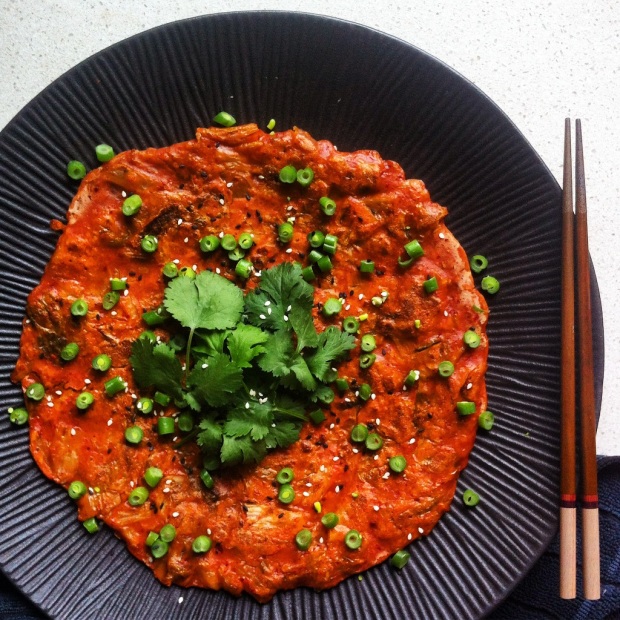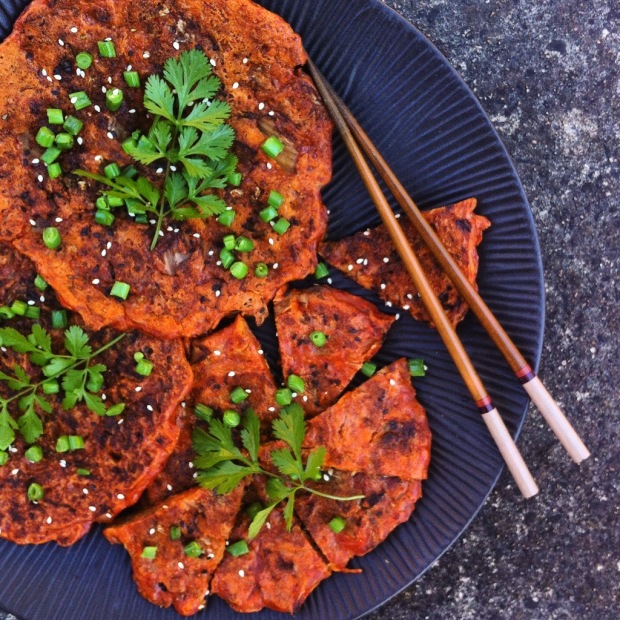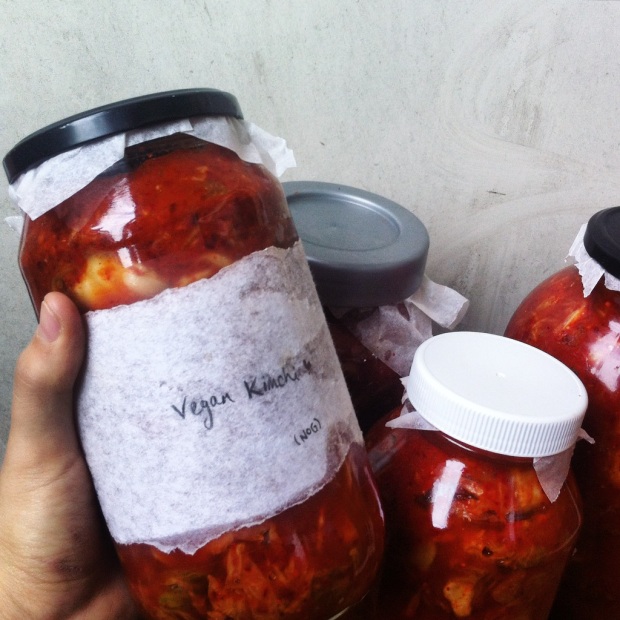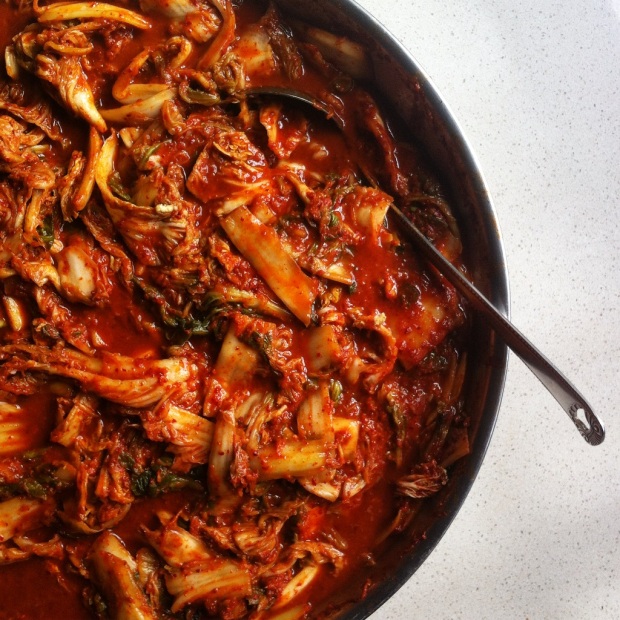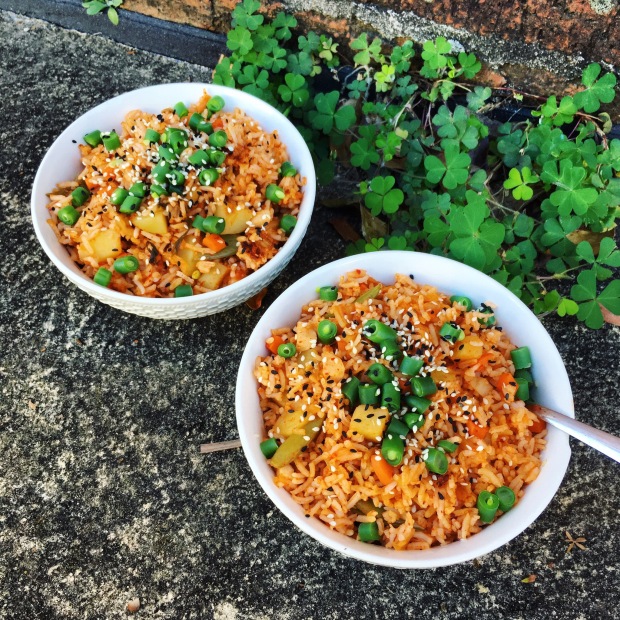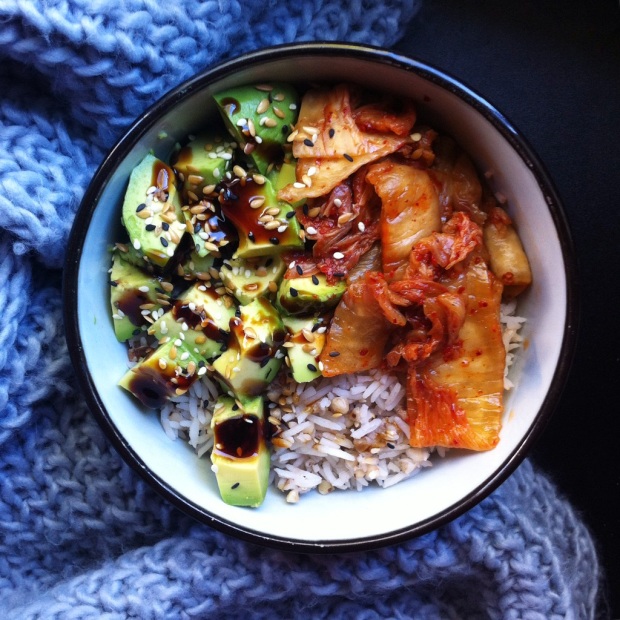Piping hot, fluffy insides, crispy outside, noochy & savoury with spicy & tangy jalapeño bits…
I know I just said a bunch of adjectives hahaha. Just know that it’s DEEELICIOUS!
I’m absolutely addicted to these! They’re basically hash browns but wafflelised & spicy!
There is no saturated fat or oil used in the waffles themselves. The only oil used is unrefined coconut oil – and that’s for greasing the waffle iron.
The cooking device? I used a non-stick Belgian Waffle maker (Mine is a Cuisinart 4 Slice Belgium Waffle Maker). The deep pockets are perfect for potato waffles that are chunky/have texture!
To adjust the spiciness level, I would suggest using:
zero: 1 cup frozen peas (add these to the boiling potatoes 2 mins before they are cooked)
mild: 8 pickled jalapeños
spicy: 12 pickled jalapeños
extra spicy: 15 pickled jalapeños + 1/2 tbsp pickled jalapeño juice (I love spicy foods so this is the level the recipe is at.)
Toppings and sauce are optional but highly recommended; they will bring some variation of flavour & texture to the waffles.
I’ve used avo, hemp & coconut bacon for creaminess and crunch. I’ve also dipped waffles in a herby tomato sauce. Both super simple and delicious! Both of these options also help cut through the spiciness/tanginess of the jalapeños.
Enjoy them fresh out of the waffle iron – try not to burn your fingers!
If you don’t manage to eat all your waffles right away, I highly highly recommend toasting them! Waffles (whether sweet or savoury) so get soggy/limp quite easily. You can heat them up again in your waffle maker, BUT the absolute BEST way to get warm is to just pop them in your toaster – after 3+ minutes, they’ll be crispier than before and piping hot again!

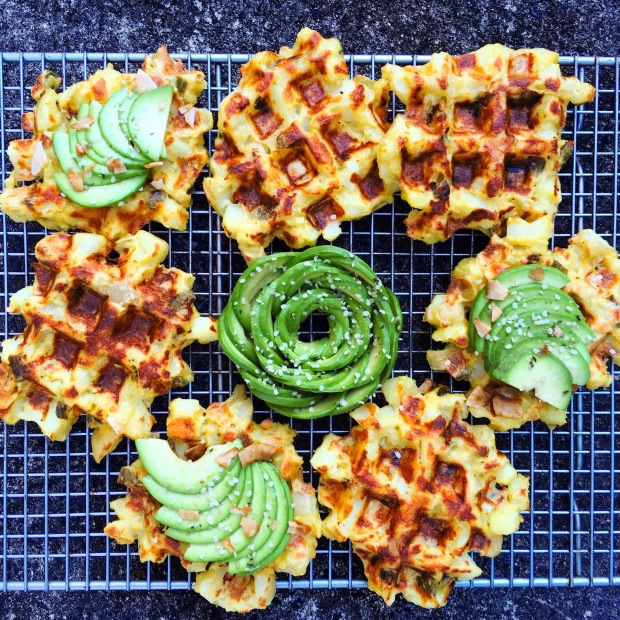
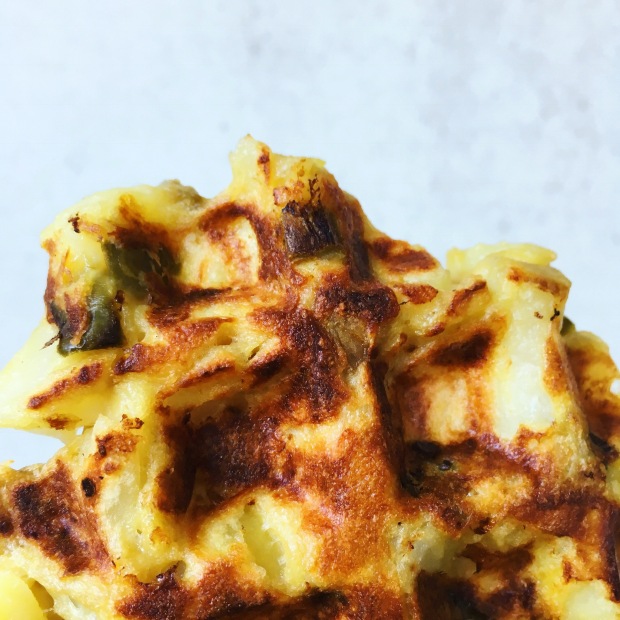

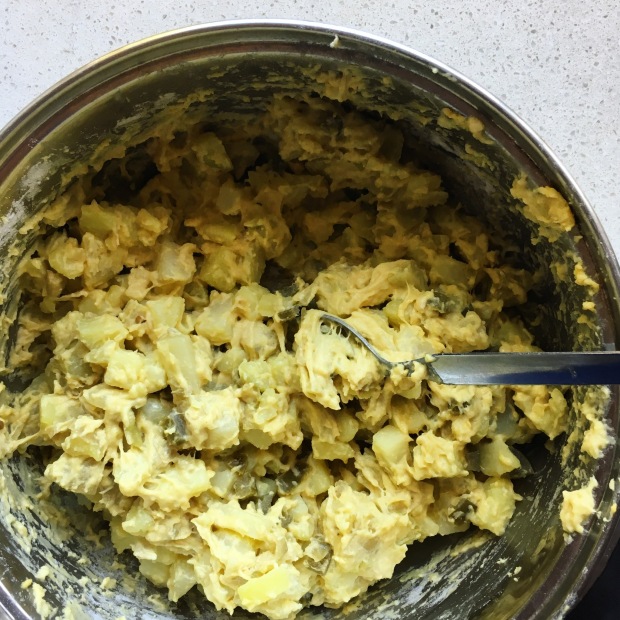
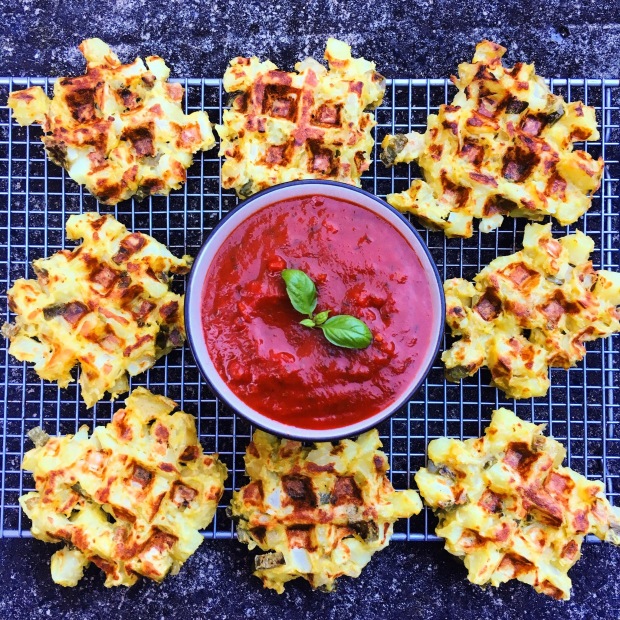
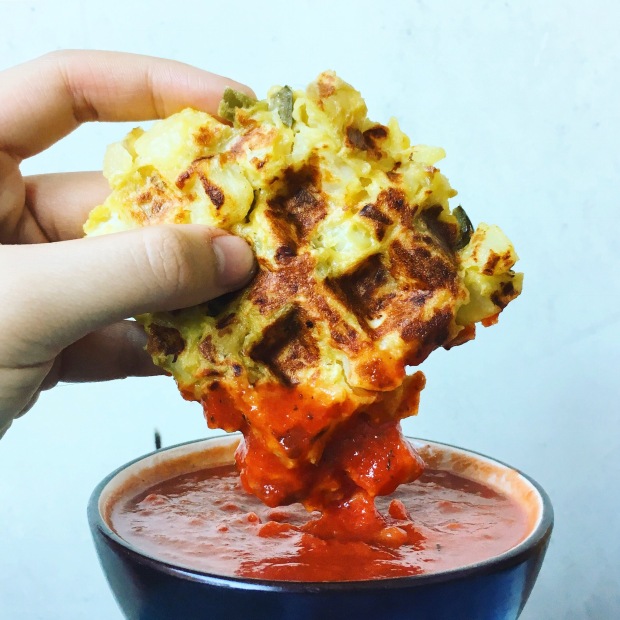
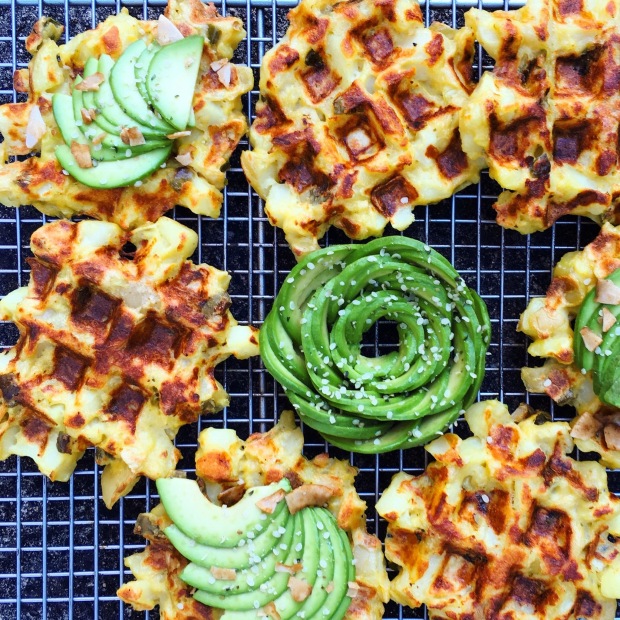
 Simplicity: 4/5 Deliciousness: 4.5/5 Nutrition: 3/5
Simplicity: 4/5 Deliciousness: 4.5/5 Nutrition: 3/5
Makes 8 medium sized Belgium waffles
Ingredients
- 4 cups medium cubed potatoes (washed)
- 1/4 tsp + 1/2 tsp Himalayan pink salt
- 1/4 cup nutritional yeast
- 1/2 cup gluten free plain flour (If you’re fine with gluten, just use plain flour)
- 15 pickled jalapeños rings (small diced)
- 3 tbsp unsweetened almond milk
- 1 tbsp pickled jalapeño juice (optional)
Method
- In a pot of boiling water, add the potatoes + 1/4 tsp Himalayan pink salt. Stir. Cook on high heat for 10 minutes.
- Turn off the heat. Drain the potatoes in a colander.
- Rinse off any foam/scum from the pot. Then place the cooked potatoes back into the pot.
- Turn on your Belgian waffle maker to mid – high heat.
- Add 1/2 tsp Himalayan pink salt, nutritional yeast, gluten free flour and diced pickled jalapeños to the pot. Mix.
- Add the remaining ingredients and stir until well combined. The mixture should be sticky (see above photos).
- Your Belgian waffle iron should be hot now. If you can adjust the heat, turn the heat of medium (a super hot waffle iron will just burn the bottom of your waffles). Grease your waffle iron (I used unrefined organic coconut oil + paper towel).
- Scoop the mixture onto the waffle iron to desired size& thickness. Lightly press down and spread evenly – you do not want to see gaps in the middle! Then close the lid.
- Cook until golden brown. Flip them when you’re happy with the colour to crisp them up a little more. Serve immediately for maximum crispiness. ENJOY!
Notes
>> The cooking time until golden brownness will differ slightly depending on the brand, type and heat level of your Belgian waffle maker.
Open the lid and check the colour of the bottom of the waffles after 5 minutes – if not, close the lid and check again every 2 minutes until you’re satisfied.
Use nonstick tongs to check! You don’t want to scratch the coating of your waffle iron.
My waffles are cold, limp and soggy 😦 What can I do?
TOAST THEM!
The absolute BEST way to get the limp waffles hot & crispy again is to pop them in your toaster. After 3+ minutes, they’ll be crispier than before and piping hot again!



